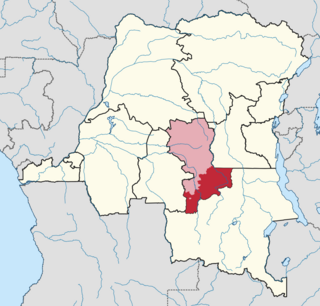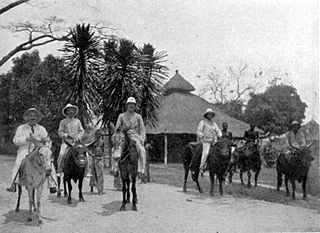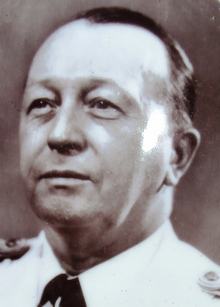
Kasaï-Occidental was one of the eleven provinces of the Democratic Republic of the Congo between 1966 and 2015, when it was split into the Kasaï-Central and the Kasaï provinces.

Kabinda District was a district of the Belgian Congo and the Democratic Republic of the Congo. In 2015 it was merged with the independently administered city of Mwene-Ditu to form Lomami Province.

Kasai District was a district of the Congo Free State, Belgian Congo and the Democratic Republic of the Congo, named after the Kasai River. It was formed around 1885 and went through several large changes in extent in the years that followed. The 1933 version of the district roughly corresponded to the former Kasai-Occidental province and the present Kasaï and Kasaï-Central provinces.

Sankuru District was a district of the Belgian Congo and Democratic Republic of the Congo. It went through various changes in extent, but roughly corresponded to the modern Sankuru Province.

Kwilu District was a district of the Belgian Congo and the Democratic Republic of the Congo. It roughly corresponded to the present province of Kwilu.
Aloïs Kabangi Kaumbu was a Congolese politician. He served as Minister of Economic Coordination and Planning of the Republic of the Congo from June to September 1960 and again from February 1961 to July 1962.

Marcel Maquet was a Belgian colonial administrator who became commissioner of Stanleyville Province in 1940, then governor of Léopoldville Province in 1943.
Count Albert-Émile de Beauffort was a Belgian colonial administrator.

Congo-Kasaï was one of the four large provinces of the Belgian Congo defined in 1914. It was formally established in 1919, and in 1933 was divided into the new provinces of Léopoldville and Lusambo.

Kasaï was a province of the Belgian Congo and the successor Republic of the Congo (Léopoldville).
Rodolphe Dufour was a Belgian colonial administrator. From 1933 to 1940 he was commissioner (governor) of the Orientale Province.
Léon-Georges Morel was a Belgian colonial administrator. He was Governor of Léopoldville Province in the Belgian Congo from 1946 to 1950.

Pierre Nauwelaert was a Belgian colonial administrator. He was interim governor of Équateur Province from 1950 to 1951, and was governor of Léopoldville Province from 1953 to 1955.

Alphonse De Valkeneer was a Belgian colonial administrator. He was the last Belgian governor of Équateur Province from 1957 to 1960 before the Belgian Congo became independent as the Republic of the Congo (Léopoldville).
Léon A. Hofkens was a Belgian colonial administrator. He was governor of Lusambo / Kasaï in the Belgian Congo from 1945 to 1948.
François Wenner was a Belgian colonial administrator. He was commissioner / governor of Lusambo Province in the Belgian Congo from 1940 to 1944.
Firmin Peigneux (1904–1968) was a Belgian colonial administrator. He was governor of Kasaï Province in the Belgian Congo from 1948 to 1952.

The Districts of the Belgian Congo were the primary administrative divisions when Belgium annexed the Congo Free State in 1908, each administered by a district commissioner. In 1914 they were distributed among four large provinces, with some boundary changes. In 1933 the provinces were restructured into six, again with boundary changes. The number of districts fluctuated between 12 and 26 through splits and consolidations, first rising, then falling, then rising again.